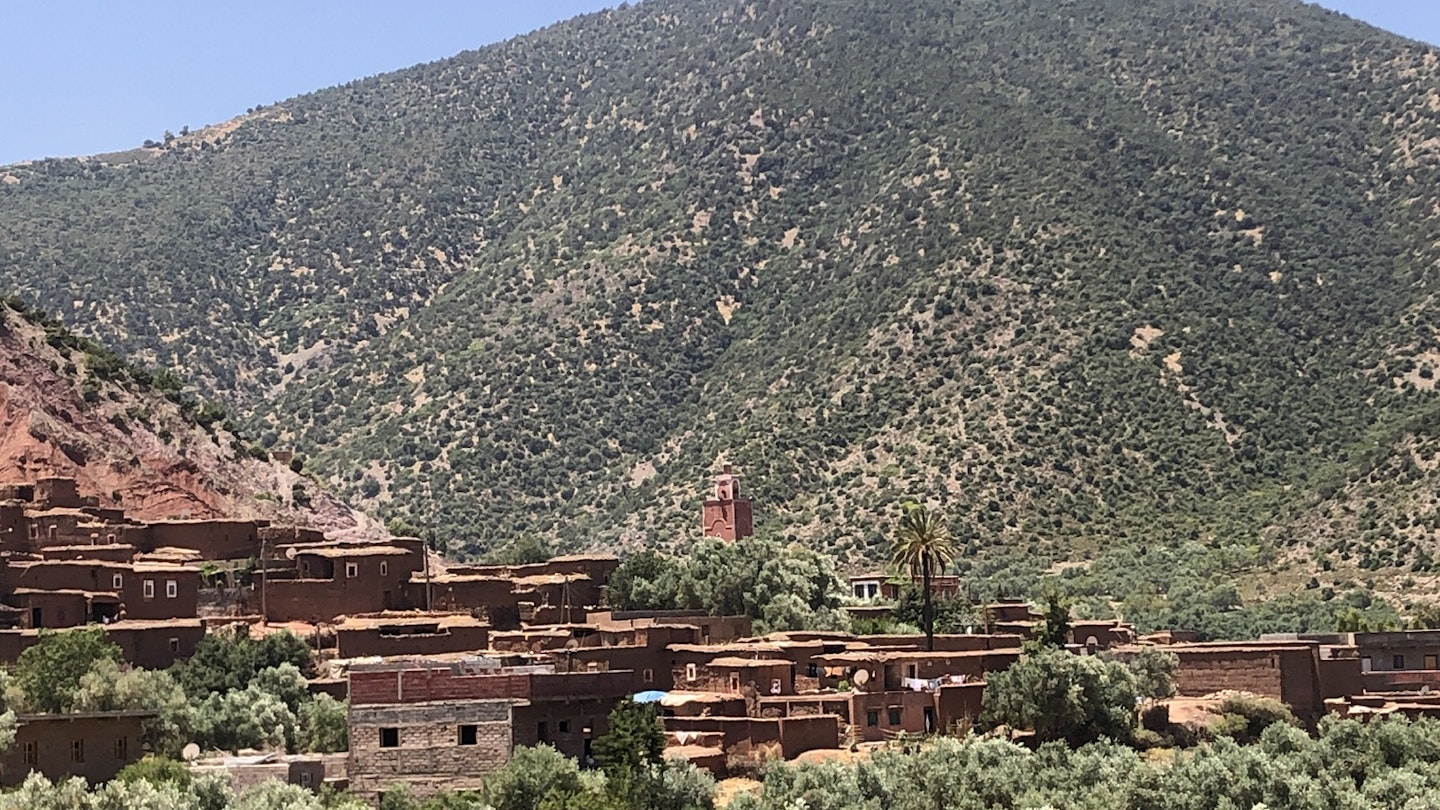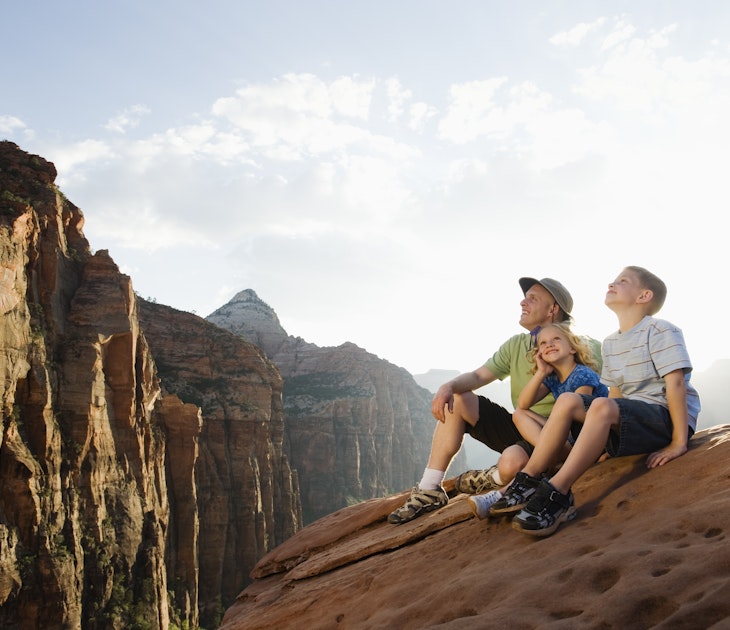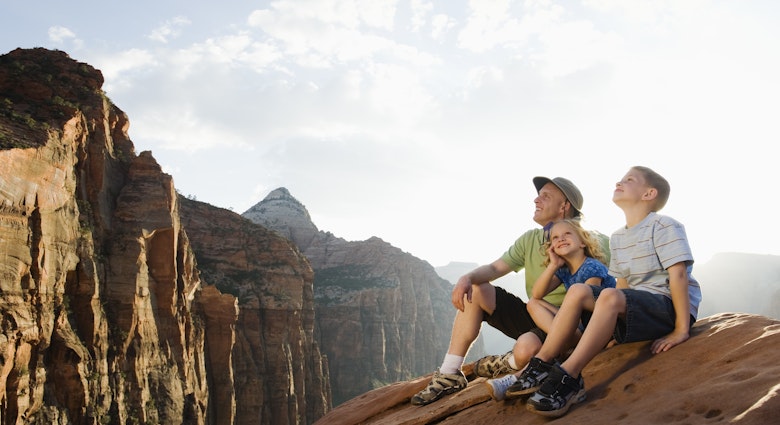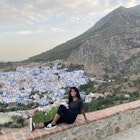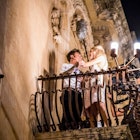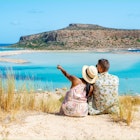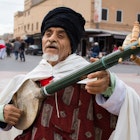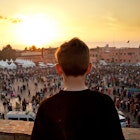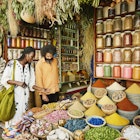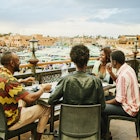Something was wrong. It was 4am, our flight to Marrakesh was in a few hours, and my husband was flailing around in bed like an upturned beetle. ‘I can’t get up,’ he said.
Despite managing to transfer him, with his trapped nerve and seized back into the car and onto the dawn flight, I realised that I’d be piloting our family (myself plus three children, aged 14, 12 and seven) solo for our adventures in the Atlas Mountains of Morocco.

We took a taxi from the airport, skirted Marrakesh’s baked terracotta walls, and gazed curiously at the ever-sparser buildings backed by emerald-and-rust coloured hills. Eventually we reached our base at Kasbah Angour, which was backed by the Atlas Mountains’ muscular moonscape that was turning tangerine and mauve with the changing light. Come evening, we could hear the soft hum of Marrakesh in the distance, with the burr of the call to prayer echoing closer by. But otherwise the only sounds were of bleating goats, the buzz of cicadas, and the baritone of big, fat toads.
With husband safely ensconced on a sun lounger, I aimed to continue our active holiday as a quasi-single parent.

Trekking in the foothills of the Atlas
Walking trails linked our base to several villages and the Toubkal National Park, so my eldest son and I struck out at dawn with our guide Abdul to beat the heat. We walked over exposed red earth, with the sky the pale colour of breath on a frosty day. Crickets – I'd never seen so many – oscillated wildly; it was almost like a plague of them. Abdul was wearing a wide-brimmed palm-leaf hat, trekking boots and a rucksack, and was carrying a hiking stick – he looked the part. My son likes walking and he was in his element, with crickets to capture, stones to collect, and politics to discuss with Abdul.
The hills seemed motionless as we headed for a village in the distance. However, there were pockets of life: a man with a donkey, women wearing bright chintz head scarfs and some kids gathered around a well. When we reached the village, all was quiet within and around its mud-brick buildings; only a chicken waddling over some stones in the street with her chicks hopping along after her. Before I knew it we were out in the hills again, the coppery parched landscape resembling the setting of a spaghetti western film. As we walked, Abdul plucked up samples of red quartz, smoky quartz and clear quartz to show my son and to let him gaze through them. He also drew a map of our surroundings in the dust with a stick as he discussed the differences between Sunni and Shia. We spotted circling kestrels, as well as wild boar footprints. Rounding a corner, we peered through a wall of cactus topped with lipstick-red flowers towards another mud-built village tucked into a crease on the mountain. Abdul told us it was named, appropriately, Utral (Elbow). When it came to time to say goodbye, my son gave Abdul a hug.

Visiting the Jarjeer Mule and Donkey Sanctuary
Outside Marrakesh, Jarjeer Mule and Donkey Sanctuary lies in the midst of barren hills, surrounded by an olive grove. It’s a collection of dusty fields, with lines of well-kept, shaded stables. Susan Machin, who runs the organisation, showed us around, gesturing, unlocking gates, keeping up a stream of entertaining commentary, and ushering us amid the animals. She and her husband had planned to build a guesthouse, but after visiting the Spana clinic for working animals in Marrakesh ended up adopting a difficult donkey at a vet’s request. That eventually led to the enormous operation that they run today. My children had never seen anything like it: almost 100 donkeys and mules, some recovering from broken legs, some sick, all being cared for by the association. On the streets we had seen donkeys working under heavy loads, so it was a remarkable experience to bring the children here to have some greater insight into the ramifications of the hard lives these animals are forced to live. For a lighter note, Sue also took us to see the baby donkeys that had been born there. My son and daughter were awestruck by the foals, who gathered around us, gently headbutting us in the enclosure.

Exploring the mountains and Berber villages via 4WD
With three kids in tow, a 4WD trip seemed the best way to get us all (including my injured husband) deep into the mountainous environment. After sorting a driver, we were driven up a narrow road clinging to the mountainside. As inhospitable as the steep slopes looked, they were surprisingly very much inhabited. At every turn of the road there were villages clinging to the rocks, with neat green fields pooling below in the valleys. And barely visible above us were always more mud-brick dwellings, each seemingly merging with the hillside under a pantone-blue sky. Along the way we passed olive groves, the odd highlighter-green field, headscarved girls walking hand in hand, and more donkeys wavering under the weight of massive haystacks – it was a captivating experience for us all. We could have gone on and on as the narrow road continued to zigzag into the distance like a scar, but we stopped for sweet mint tea instead. Having quickly struck up a conversation with some locals, my eldest sat at another table: he’d found a rich stream of bonhomie as he knew something about Moroccan football.

Camel trekking in Moulay Brahim Gorge
On another day, I decided to take the children on a camel trek through the awe-inspiring Moulay Brahim Gorge. After taking a taxi to the starting point at the end of the gorge, we mingled with locals who'd also gathered to make their own treks on either horseback or camel. Our journey was not an arduous one, rather a short amble up the valley atop the camels. Thankfully the animals appeared well cared for, and the lurching beasts caused the boys much hilarity. Again, we made a customary stop for some mint tea, but this time it was under bamboo shades with our feet in the river.
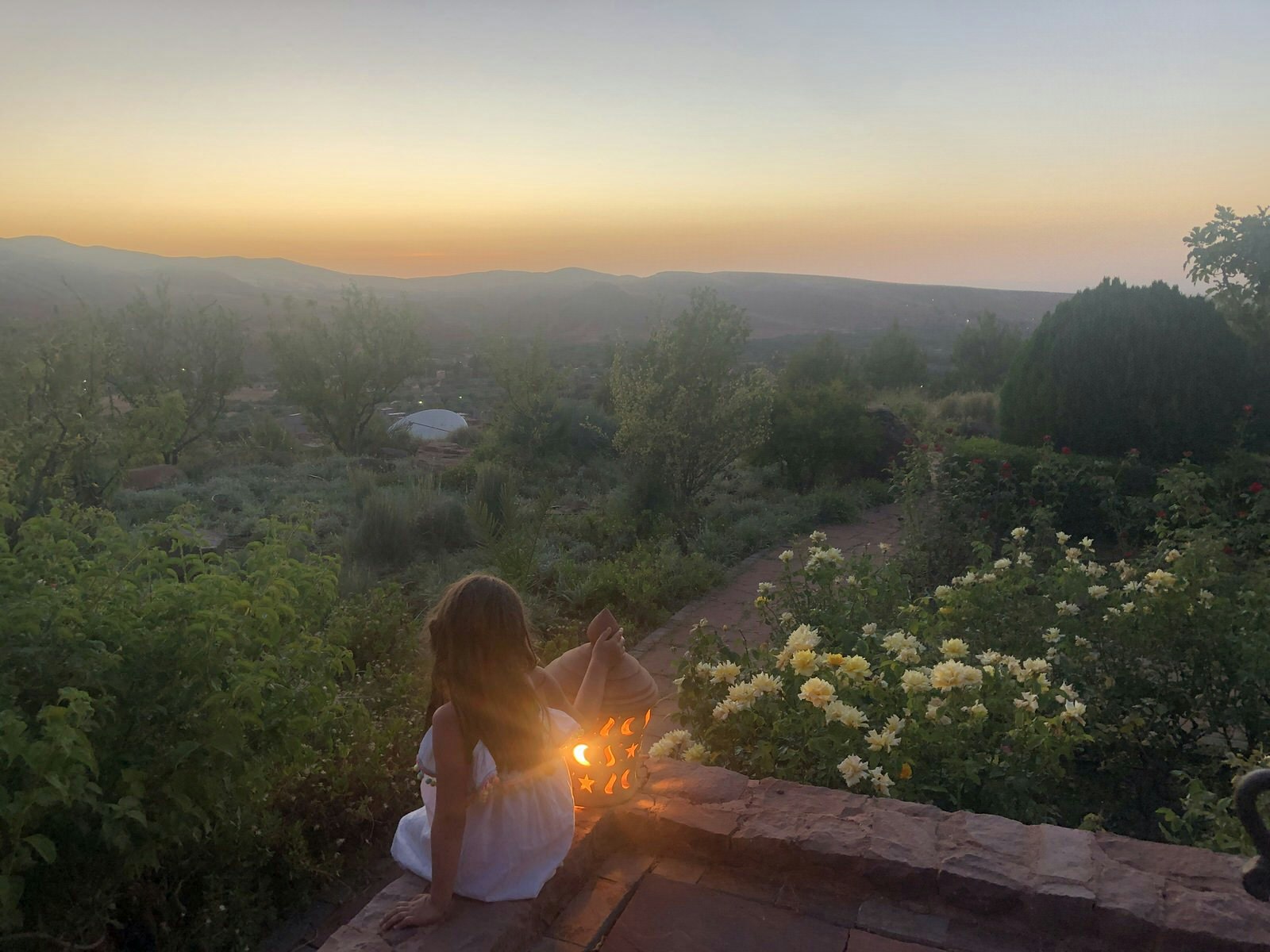
Conclusions
When we departed Morocco my children told me that it had been one of their best holidays. They loved the feeling of difference and freedom, the wide-open spaces outside the cities, the sense of an ancient culture, the wandering tortoises, the spiky cactus, and the hardworking animals, from the camels in the desert to the unforgettable rescued donkeys. But for me, I found that it was actually the unplanned moments that resonated the most. There were plenty of them: lying on the springy grass at night, looking at the spangled sky overhead; together with my son discovering a comically enormous toad warbling in the dark; watching my daughter marvel at the marmalade fireball sun sinking behind a distant hill, as drums rat-a-tat in a nearby village; and the call to prayer bouncing across the hills.
On the practical side, organising guides and lifts from the hotel was easy, and I found travelling with kids in Morocco to be a joy, with a warm welcome everywhere we went. I also had the advantage that I could divide and conquer (leaving the younger two less-keen walkers with their dad while I went on a 12km hike with the eldest, for example).
Abigail Blasi travelled with support from Kasbah Angour. Lonely Planet contributors do not accept freebies in exchange for positive coverage.

